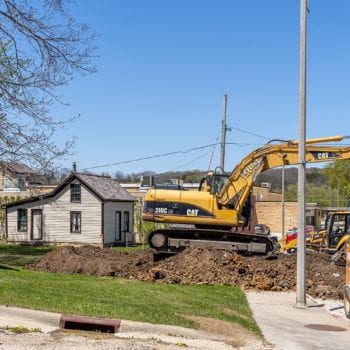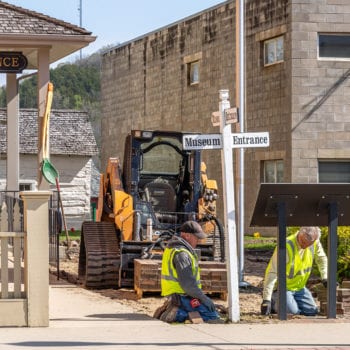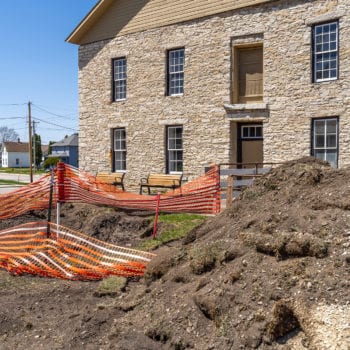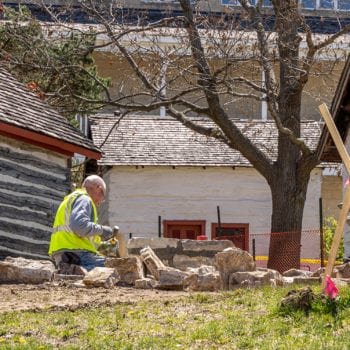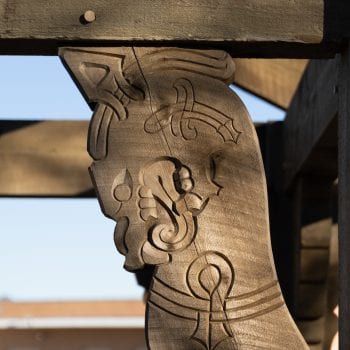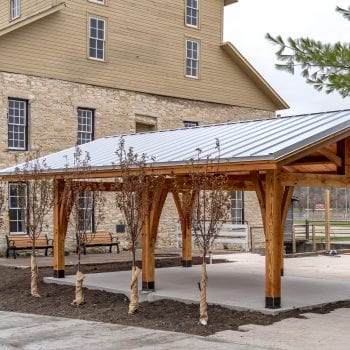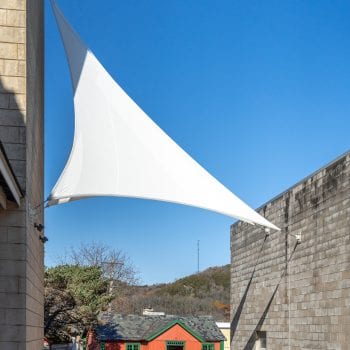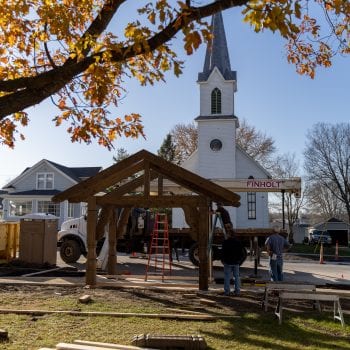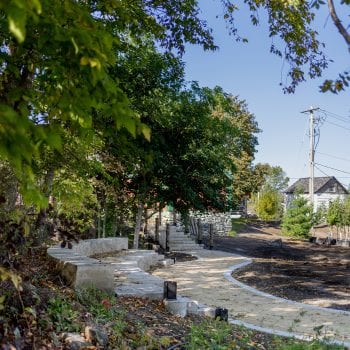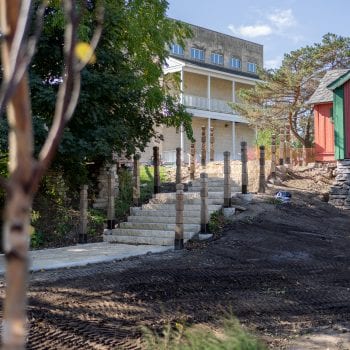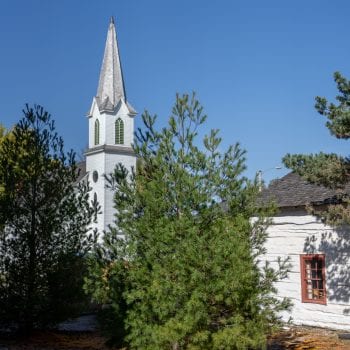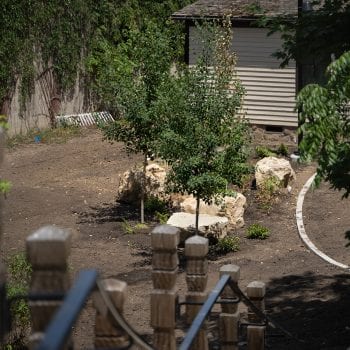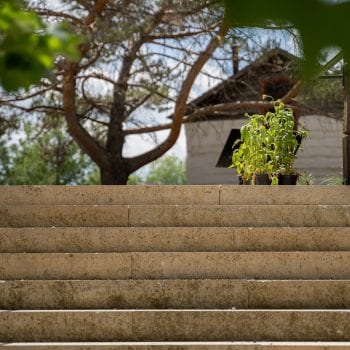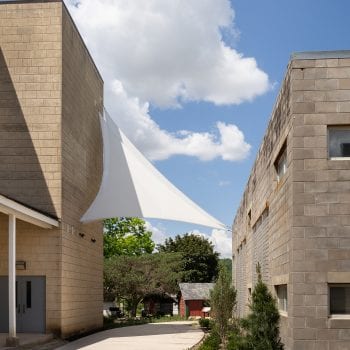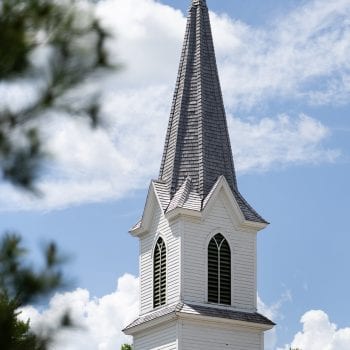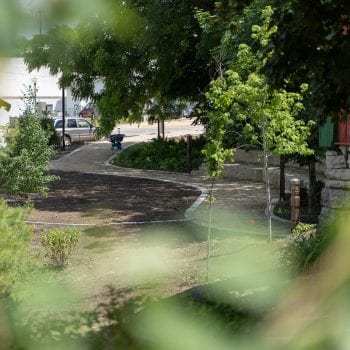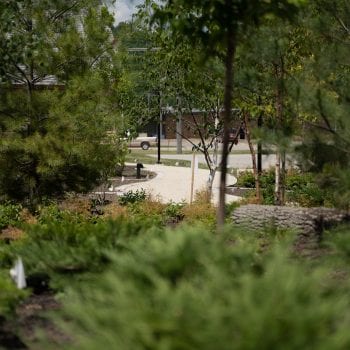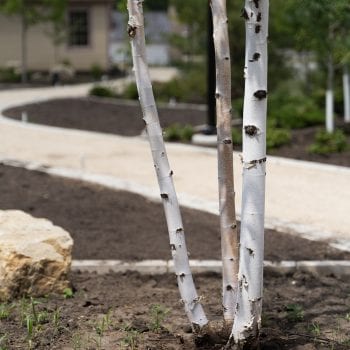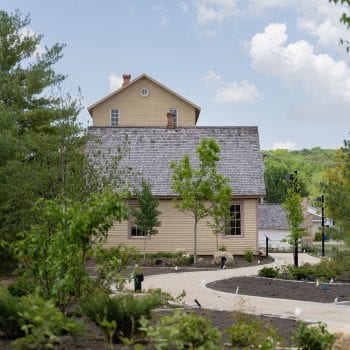Join us for a dedication ceremony and entertainment on August 21 at 1:30 p.m. Find more information about the event here.
Vesterheim traces its history back to Luther College in 1877. Luther President Laur Laursen had a bold and courageous dream—to begin collecting everyday objects of Norwegian immigrants. In line with this dream Laursen’s successor, C.K. Preus, created an open-air display beginning with the Egge-Koren log house. That display was eventually moved from Luther to Vesterheim’s downtown campus and continued to grow.
Now, Vesterheim has re-imagined this open-air display into Heritage Park, an important component of the museum’s collection. In Heritage Park, the museum’s unique historical buildings are showcased within an accessible, landscaped park. Incorporating the Nordic appreciation for nature and outdoor living, Heritage Park better connects Vesterheim to the Decorah community and helps the museum continue to share stories that will inspire and touch many generations to come!
This exciting project not only enhances museum programming but serves as a welcoming and accessible community gathering space as well. The design utilizes a Norwegian forest-and-glade concept, with extensive tree plantings surrounding a scattering of open areas for public gatherings, the interpretation of historic buildings, educational functions, and folk-art classes—there is even a small amphitheater for performances! Heritage Park’s pathways are in compliance with ADA accessibility standards.
The park was designed by Damon Farber, the award-winning landscape architectural firm from Minneapolis, Minnesota, in partnership with Snøhetta, the renowned international architecture and landscape architecture firm with offices in New York City and Oslo, Norway. Heritage Park is part of an overall Master Site Plan created for Vesterheim by Snøhetta. We thank them both for their expertise, guidance, and dedication in creating an awe-inspiring project.
In our Master Planning process, we are making a shift toward sustainability and this is an early step in that direction. The Heritage Park plan recognizes our relationship to the Upper Iowa River, which used to run next to our property, and our continuing responsibility toward it.
The landscaping incorporates many environmentally sensitive elements, thanks to a $100,000 grant from the Iowa Department of Agriculture and Land Stewardship’s Water Quality Initiative (WQI) Urban Conservation Project. Vesterheim worked with Amy Bouska, Eastern Iowa’s Urban Conservation Program Coordinator, on the grant.
As the grant outlines, the plans for Heritage Park implements four primary practices to transform a currently under-utilized, traditional mowed lawn into a densely planted, tree-covered landscape with features that improve filtration, reduce nutrient and sediment runoff, and demonstrate sustainable storm-water management. These practices include soil quality restoration, native landscaping, a bioretention cell, and permeable pavers. Through successful implementation and maintenance, these practices demonstrate the importance of reducing negative impacts contributing to the impaired water conditions of the nearby Upper Iowa River.
Heritage Park would not be possible without some exceptional partners — Margaret A. Cargill Philanthropies, Iowa Department of Agriculture and Land Stewardship’s Water Quality Initiative Urban Conservation Project, the Paul D. Pratt and Marguerite Olson Pratt Fund of InFaith Community Foundation, and Kate Nelson Rattenborg. Vesterheim has also received funding from Winneshiek County Community Foundation and Humanities Iowa for interpretive signs.
The primary contractor for the project is 2nd Nature Landscaping, Bloomington, Minnesota, and other contractors include Skyline Construction, Inc., Wicks Construction, Perry Novak Electric, and Stevenson Tree Care, all of Decorah.
The history and 360 degrees images of each Heritage Park building are available here.

